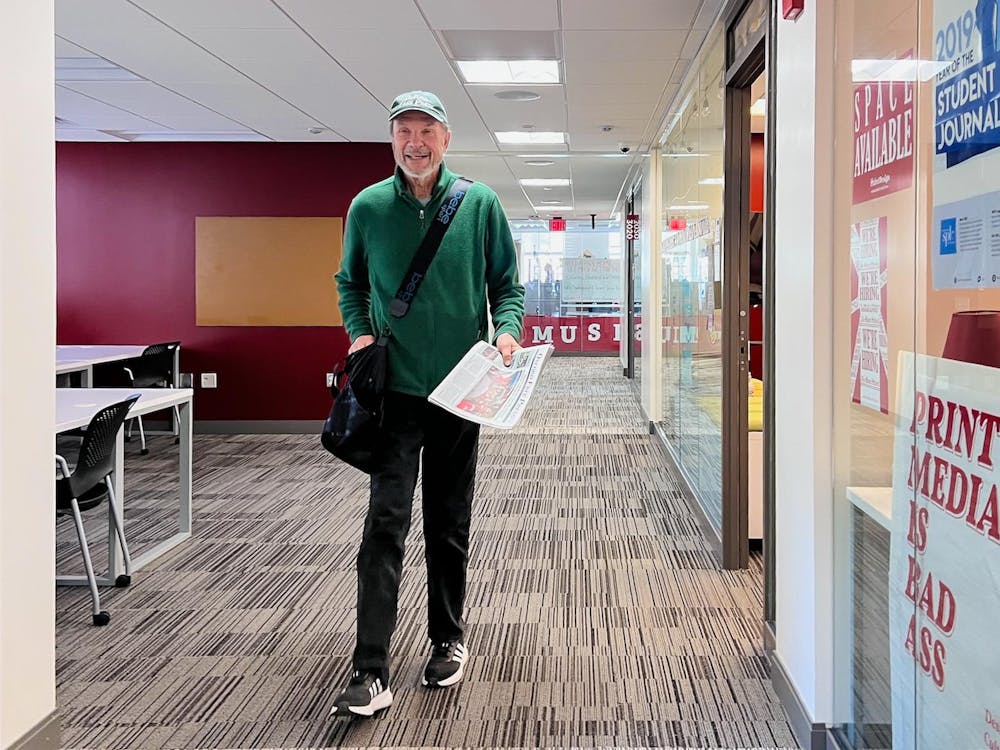By Paris Franz, For The Miami Student
Three weeks ago, Miami University's anthropology department used a 3D printer to create models of the fossils of Homo naledi, just days after the human ancestors were found deep in a South African cave.
3D printing provides students and faculty of all departments the opportunity to bring their subjects from computer screens to reality.
Miami has two 3D printing locations, one at B.E.S.T. Library, located in Laws Hall, and the other at the CIM (Center for Information Management) Lab in King Library.
John Williams, senior library technician at B.E.S.T., said the on-campus demand for 3D printing capabilities has been rapidly growing.
"We've been official for two years and we're continually growing," he said. "I've been more busy this semester in the first three weeks than I have the past two years that we've been doing this."
Williams attributed a major part of this growth to the addition of 3D printing to the curricula of mechanical engineering.
The printers are primarily used by engineering and architecture students to create 3D models and prototypes, said Williams. However, he said 3D printing has useful applications in a variety of fields.
"There are very few disciplines on campus that I can not think of a way that we can use [3D printing]. I mean, very, very few," Williams said.
Miami's 3D printing page, accessible through the Miami Libraries' website, gives several examples of 3D printing applications according to major, including fine arts and business. Fine arts students use 3D printing to create sculptures and jewelry, while business students create 3D prototypes of products in advertising.
Mark Fisher, director of instructional laboratories in the Department of Physics, uses on-campus 3D printing to create custom laboratory equipment. He encourages students in the sciences to use 3D printing technologies to do the same.
"Designing fixtures and apparatus to do specific tasks, students could do that easily," Fisher said.
Enjoy what you're reading?
Signup for our newsletter
3D printing creates models of digital designs by "printing" layers of melted lightweight plastic. The plastic layers build up on top of each other to create a 3D object. At Miami, 3D printing costs students $0.25 per gram of the plastic used, while the student versions of 3D design software can be downloaded for free from links on Miami's 3D printing page.
B.E.S.T. Library is also equipped with scanning equipment that creates 3D blueprints of physical objects, allowing replicates to be printed. Archaeology and paleontology faculty can scan original artifacts and create 3D models that students can study more closely.
The 3D printers can be used recreationally, too. Students can pay to print hobby items such as cellphone cases or statues - essentially anything besides weapons or weapon imitations.
Micayla Spiros, an anthropology major, used 3D printing to examine the models of the Homo naledi. She said 3D printing has enhanced her education by allowing her to have a more interactive experience and develop a personal connection with her studies.
"I think it is a useful resource and a great piece of technology that will definitely be coming into play in the field in the future," Spiros said. "It is really cool to get to see it in the classroom early, especially in undergraduate education. People can get a hands-on experience with the different artifacts."
Requests for 3D printing can be submitted online at Miami's 3D printing page. The time for 3D printing is typically about three to five business days. On average, the printers get three requests per week, and each request typically takes five to 10 hours to print. However, at the end of the semester Williams advises submitting a request at least two weeks before it is needed due to a higher demand for the machine.
"Students take the priority here. If it's a faculty member coming in wanting to print something for a class, as opposed to a student who has a senior design project and it's due next week," Williams said, "they will always take priority because they're students. You guys are here for learning and that's what we want to make sure we foster."




